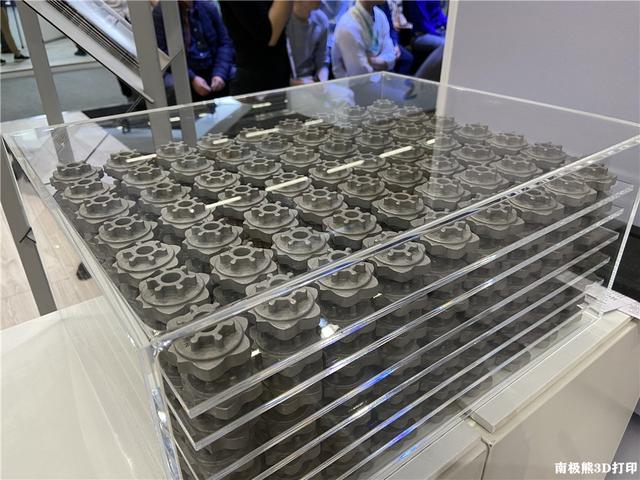Adhesive jet 3D printing technology, in the future, it is possible to realize a large format manufacturing process of 4 meters or even 8 meters, and it is a "one pass" (one pass) ultra-high speed mode, which can be mass-produced industrially and supports sand plaster, cement, ceramics Or metal and other materials.
From 2021 to 2022, the adhesive jet metal 3D printing technology will be more mature and perfect. With extremely high printing speed and extremely low material cost, it is expected to enter the mass production stage, which may be relatively longer than the historical SLM metal 3D printing technology has larger industrial applications. At present, pure 3D printing companies such as Exone, Digital Metal, and XJet have been involved in such technologies. Among them, the two major industrial giants, General GE and HP HP, are particularly interesting. Metal 3D printing technology products based on adhesive jet will be introduced to the market. There are already very attractive application attempts in the automotive and other industries.
HP Adhesive Jet Metal 3D Printing
HP's adhesive jet metal 3D printer HP Metal Jet Printing technology
HP's metal 3D printed parts

HP's adhesive jet metal 3D printer equipment has a print size of 430 x 320 x 200 mm (16.9 x 12.6 x 7.9 inches), and uses an adhesive jet process to produce a large number of parts and large parts
• Increase productivity by 50 times
• Printing accuracy can reach 1200 x 1200 dpi
• The high reusability of materials can reduce material costs and waste, but will not affect the quality of parts.
• Density after sintering> 93%, similar to MIM
Volkswagen Group selected HP Metal Jet as the basis of its additive manufacturing industrialization strategy. Volkswagen and Hewlett-Packard are working together on design and production. They are also working closely with third-party application manufacturer GKN Powder Metallurgy. In 2019, more than 10,000 high-quality parts were produced in just a few weeks. Support the launch of the new ID.3 electric vehicle.
GE Additive's Binder Jet adhesive jet metal 3D printing
GE Additive's Binder Jet adhesive jet metal 3D printer H2
GE Additive is vigorously developing a solution for metal 3D printing automotive applications-the new binder jet solution Binder Jet, which will meet the manufacturing needs of the entire automotive industry: "They need speed and mass production. This is what we think of the new Where adhesive jetting solutions will play an important role in the automotive sector. We already have some good partners in this area and are cooperating to develop this technology."
Wabtec uses GE Binder Jet adhesive to jet metal 3D printer H2 binder parts
Wabtec, a manufacturer in the railway and transportation industries, has purchased the H2 adhesive jet metal 3D printer. Cummins Cummins, a Fortune 500 manufacturer, also purchased H2 for mass production of parts.
GE's Binder Jet system uses the same three steps as other binder and sintering processes. First, the metal powder and binder are combined to print into preliminary parts, then degreased and sintered, and then solid metal parts are obtained. With the expertise of GE's AP&C metal 3D printing materials business and the software functions of GeonX, it is essential to improve the end-to-end process from documents to finished products. For example, the compensation of shrinkage deformation of parts after degreasing and sintering, and the influence of powder and binder on the properties and strength of part materials are very large and require a lot of technical input.
Jake Brunsberg and Josh Mook of GE Additive
The aerospace and medical industries are the main users of metal additive manufacturing today, because there are fewer opportunities for large-scale production of economically viable parts in other industries. The ratio of input cost to productivity of Binder Jet technology, as well as the significantly reduced cost of raw materials, are gradually changing this status quo, enabling it to catch up with traditional manufacturing technology in the largest manufacturing field (automotive). This will greatly change the automobile manufacturing industry. In mass production in the automotive industry, the use of additive manufacturing design can release the ability to create novel solutions in terms of engine efficiency, electrification, and reduction of nitrogen oxides. While solving traditional major problems, 3D printing technology can reduce inventory and change the old supply chain.
GE plans to first apply to the pilot production line, and then develop into a complete industrial plant solution, and is expected to be on the market in early 2021.

